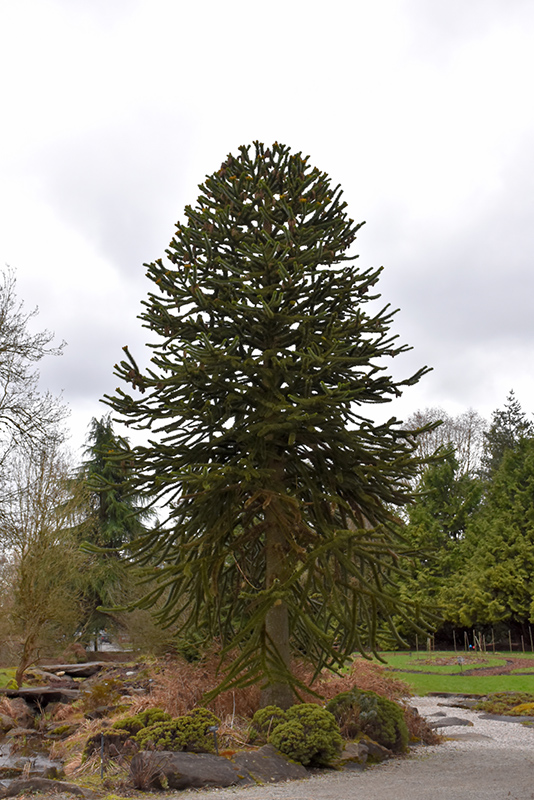>> Home
Height: 70 feet
Spread: 35 feet
Sunlight:
![]()
Hardiness Zone: 7a
Other Names: Chilean Pine
Description:
A large bizarre looking evergreen that forms a loose symmetrical see-through crown, pyramidal in youth, rounding and flattening with age; an incredible ornamental accent tree sure to be a conversation starter; tolerant of most soils
Ornamental Features
Monkey Puzzle Tree is primarily valued in the landscape for its distinctively pyramidal habit of growth. It has attractive dark green evergreen foliage. The small spiny pointy leaves are highly ornamental and remain dark green throughout the winter.
Landscape Attributes
Monkey Puzzle Tree is an open evergreen tree with a strong central leader and a distinctive and refined pyramidal form. It lends an extremely fine and delicate texture to the landscape composition which can make it a great accent feature on this basis alone.
This is a relatively low maintenance tree, and usually looks its best without pruning, although it will tolerate pruning. Deer don't particularly care for this plant and will usually leave it alone in favor of tastier treats. It has no significant negative characteristics.
Monkey Puzzle Tree is recommended for the following landscape applications;
- Accent
- Vertical Accent
- Hedges/Screening
Planting & Growing
Monkey Puzzle Tree will grow to be about 70 feet tall at maturity, with a spread of 35 feet. It has a low canopy with a typical clearance of 3 feet from the ground, and should not be planted underneath power lines. It grows at a slow rate, and under ideal conditions can be expected to live for 80 years or more.
This tree should only be grown in full sunlight. It does best in average to evenly moist conditions, but will not tolerate standing water. It is not particular as to soil type or pH, and is able to handle environmental salt. It is quite intolerant of urban pollution, therefore inner city or urban streetside plantings are best avoided. Consider applying a thick mulch around the root zone in winter to protect it in exposed locations or colder microclimates. This species is not originally from North America.

